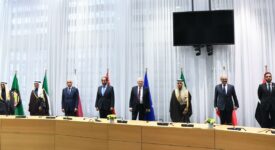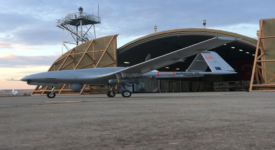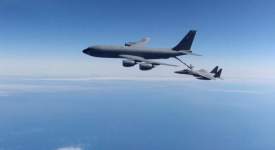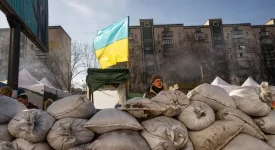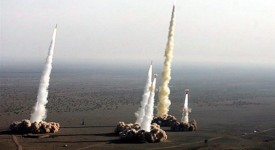The Middle East and North Africa (MENA) does not lend itself to a quick analysis. Since the series of Arab uprisings in 2011, conflicts of divergent origins across the Middle East have intersected and metastasized. This has drawn in not only regional, but also international powers. It poisons the relations between them, creating more complications for the policymakers who need to respond effectively.
Post-2011 events, occurring at dizzying speed and full of apparent contradictions, compound the problem. Widening and increasingly intersecting conflicts are having a deleterious impact on the region’s social fabric and its people. As a result, what happens in the region is no longer confined to it. To settle these conflicts and to maintain regional and even global stability, we need policy responses that chart paths toward de-escalation and, eventually, more sustainable arrangements for a peaceful coexistence of states and communities. Simply put, they should not make matters worse.
Policy responses that treat conflicts in isolation and ignore their root causes may end up doing more harm than good. Stabilizing war-torn states or de-escalating crises requires an understanding of the interconnectedness and the deeper drivers of regional conflicts. Grasping the roots and primary characteristics of the MENA region’s ever-changing complexion requires a new way of looking at it. We can no longer simply study conflicts in isolation, as these conflicts could be characterized as a branching web. Each one is interconnected with the other, and to really understand it, we need to understand them as a whole.
The Arab-Israeli conflict, for example, which dates a century ago, has sprung the confines of the territory known as Israel and Palestine to cover new terrain, in particular Lebanon, and sprout new conflict actors, such as Hezbollah. Today, Hezbollah participates in the Syrian civil war, which has roots outside the Israel-Arab conflict, and is allied with Iran, whose ascendancy in the region following the failed 2011 popular uprisings has provoked destabilizing responses from Gulf states such as Saudi Arabia and the United Arab Emirates, especially in Yemen.
Meanwhile, these same states are projecting influence in North Africa to prevail in what was originally a separate struggle between competing political expressions of Sunni Islamism, involving the Muslim Brotherhood. To make matters worse, the festering Syrian and Yemeni wars have infected global powers such as Russia and the US, who are deploying their tremendous weight on behalf of one of the sides but are so far unable to do so decisively and forge durable settlements.
All in all, policy responses directed toward individual events in individual conflicts may backfire. Not only because such policies tend to be rushed, but their solution always seems very superficial, ignoring the long history behind these conflicts. A new methodology is needed to address them, through both analysis and policy. Instead of policy prescriptions for individual conflicts, they are all placed in a framework, with the actors behind them. This could show what motivates these actors and what drives their conflicts. Then, after a careful examination by leading experts in this field, a conclusion that would be beneficial to this region could be drawn.
‘Tackling the MENA Region’s Intersecting Conflicts’ – Research Paper by Joost Hiltermann – International Crisis Group / ICG.

